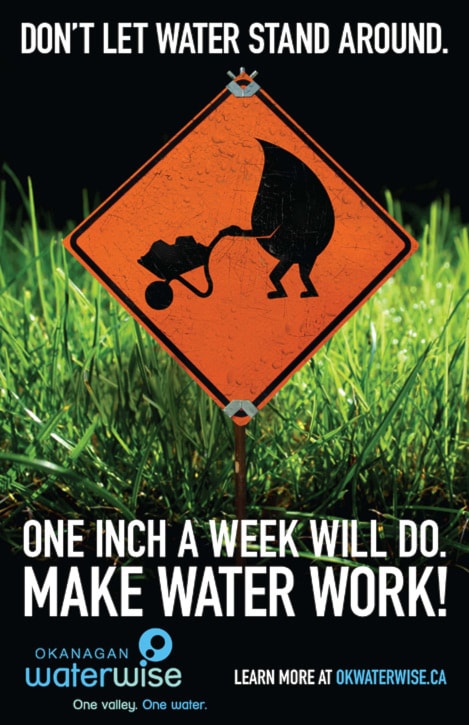“What is with these water restrictions?”
This is a question I am constantly asked as water conservation ambassador for the regional district. This is sometimes followed with, “We’ve got lots of water — just look at the lake!”
I can understand their confusion, discussing the need for water conservation when we are living so close to a huge body of water with unusually high water levels this summer. Plus records indicate this has been one of the coolest, wettest springs on record. It does give resident’s cause to scratch their heads.
Water restrictions, sprinkling regulations or any water conservation program is complex. Programs (and usage bylaws) are implemented as one part of an overall strategy by water utility purveyors who must consistently supply clean, fresh water to all the various users of the system. Water utilities are required to provide clean potable water to all residents as well as commercial, industrial and agricultural sectors.
Much the same as electricity suppliers, spreading out the demand is crucial in maintaining a viable system. Balancing the demand for water, or stress on the water system infrastructure, is further complicated by changes (increases) in population growth, type and size of subdivisions, distance or elevation challenges and our lifestyle demand — morning showers, evening baths and thirsty lawns and gardens. Agriculture (food production) requires a constant demand during the peak growing season with major fluctuations driven by Mother Nature — the weather. Commercial demand is varied and diverse. The recreation centre pool, hotels, restaurants, grocery stores, laundromats and carwashes are just a few commercial entities using water continuously year round. Industry can be both a light or seriously heavy user depending on the product produced and the time of year. The water purveyor’s challenge is to balance the demand, maintain infrastructure, while keeping up with changes and growth in the service area. It is expected that water utilities will provide (as inexpensively as possible) a continuous flow of the precious resource, clean and pure, anytime anyone wants to turn on a tap.
Water restrictions are not just to provide a framework for basic water conservation, but to assist in the overall balancing of peak demands. Coordinating the outdoor water by imposing the even/odd system; even addresses one day and odd addresses the next, demand on the system is reduced. There are many variations to this, but inevitably it attempts to significantly reduce costs and the volume of water requiring extraction, processing, storage and purveyance.
By adhering to the restrictions in your community, you are actually saving your own money. Wasting water in any sector stresses the infrastructure, shortening the lifespan of the system, potentially adding expensive repairs. Whether we use water to grow food, supply tourist enjoyment, or a green lawn for family and friends, a level of accountability is hopefully instilled through understanding the need to insure the water flows pure and clean — past our generation and into the future. A responsibility we all share.
Any questions about watering restriction? See these links — www.okwaterwise.bc.ca or www.rdos.bc.ca, or feel free to contact me.
Zoe Kirk RDOS water ambassador
250-488-0285
zkirk@rdos.bc.ca
